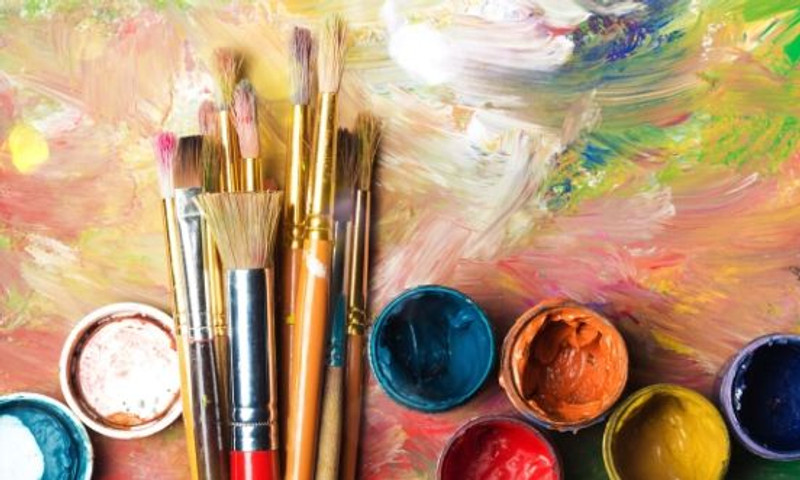As we mentioned in a previous article, many artists opt to make their own paint as opposed to using the pre-made options from a store. You can achieve this by mixing your solvent and binder with pigments such as ocher pigments or mica powder. Today, we want to focus on a few different methods to make your own paint so that you can realize the benefits of it firsthand. Mixing your own paints is a fairly simple task, and we’ll go over a few different mediums that can impact your results.
When you add your thinner, you want to really work it into your paint to achieve the best results. We recommend you begin with a conservative amount of solvent and add more as needed.
Mineral spirits are less toxic then turpentine, but they also cost more. A little bit goes a long way with mineral spirits, and they aren’t as odorous as other options—namely, acetone. While unpleasant to the nose, acetone is inexpensive and the least toxic of these three options.
Linseed is an attractive option for many because it can come in various colors and different consistencies. Linseed oil has a strong binding power and gives paint a glossy, more transparent effect.
What is a Solvent?
Those who don’t know what a solvent is should familiar themselves with the medium. Also known as paint thinner, a solvent is what you mix with your pigment to create your paint’s texture and opacity. How much of this you add to your mixture will ultimately impact these factors.When you add your thinner, you want to really work it into your paint to achieve the best results. We recommend you begin with a conservative amount of solvent and add more as needed.
What is a Binder?
When you create your own paint from a pigment, you need to add a binder to hold the particles of said pigment together. This is extremely important, as you need it to ensure the pigment stays in place as the paint dries.Common Solvents: Turpentine, Mineral Spirits, and Acetone
Turpentine is one of the most commonly used solvents in oil paint; although, the vapors it releases includes chemicals that can harm you if inhaled. Turpentine usually decreases paint’s drying time, but this means you’ll want to continuously work your brush into your paint to keep it wet. You can reactivate dried paint by adding more turpentine to it.Mineral spirits are less toxic then turpentine, but they also cost more. A little bit goes a long way with mineral spirits, and they aren’t as odorous as other options—namely, acetone. While unpleasant to the nose, acetone is inexpensive and the least toxic of these three options.
Common Binders: Egg Tempera and Linseed Oil
These two ingredients are popular binders, and a binder is essential when using pigments. Egg tempera is a popular medium used in paints due to the radiant sheen it gives an art piece. Egg tempera dries fast and is free of any harmful chemicals. You’ll want to separate the egg yolk with vinegar or lemon juice before mixing it. We provide detailed instructions on how to create egg tempera here.Linseed is an attractive option for many because it can come in various colors and different consistencies. Linseed oil has a strong binding power and gives paint a glossy, more transparent effect.

